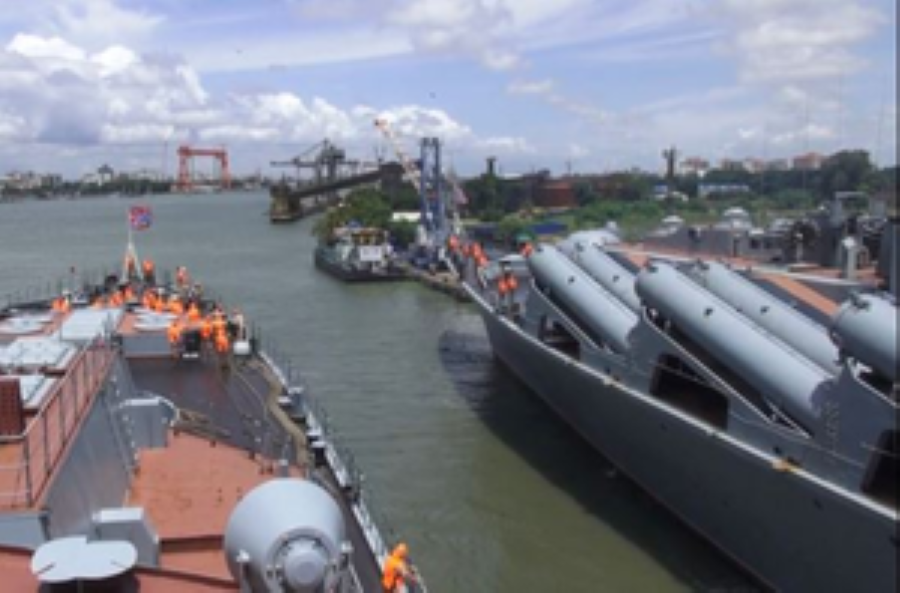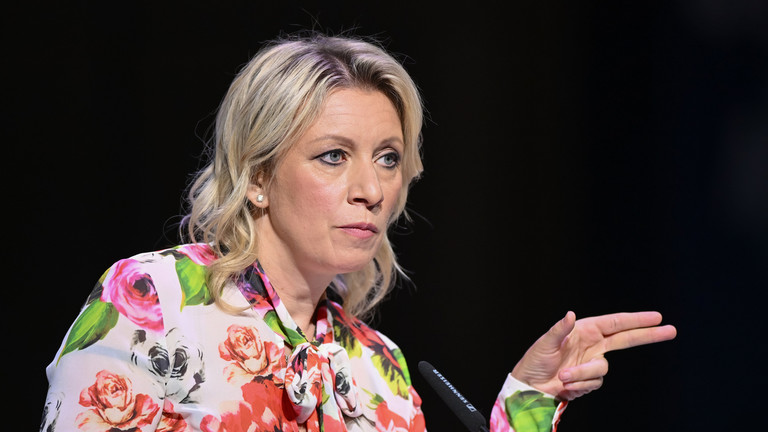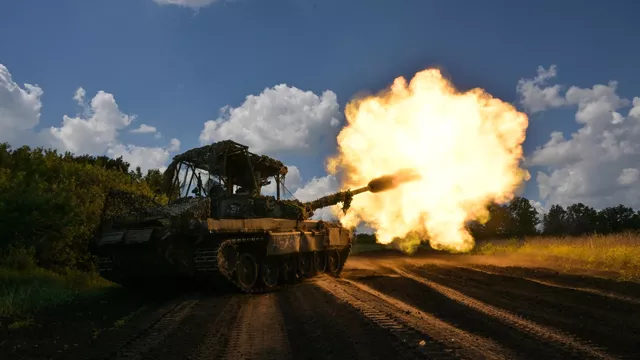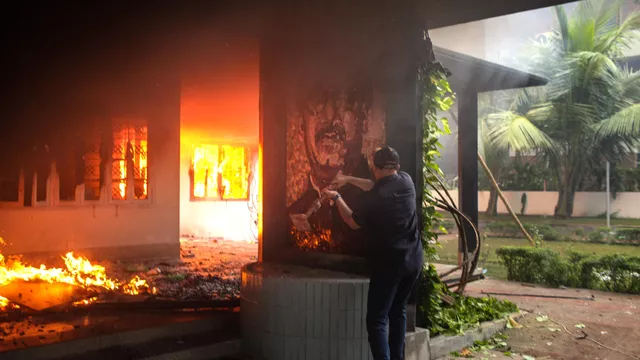A group of Russian warships has called at the Indian port of Kochi on the southwestern coast, the Ministry of Defence of the Russian Federation said.
“The Guards missile cruiser “Varyag”, holder of the Order of Nakhimov, and the frigate “Marshal Shaposhnikov” of the Russian Pacific Fleet have made a strategic port call at Kochi, India, in the Arabian Sea,” it said on Tuesday.
The ships will resupply their stocks at the port in India, go sightseeing around the city, and participate in friendly drills with Indian sailors. “This visit underscores the strong maritime cooperation between Russia and India,” it emphasised.
Cochin is a large port city in Kerala on the coast of the Arabian Sea.
The Russian Defence Ministry said in a statement that the visit to the port of Kochi is made within the tasks of the Pacific Fleet’s ships during a long-distance mission.
A few days earlier, the detachment of ships left the port of Salalah, Oman. The long-distance mission of the Pacific Fleet’s detachment began on 22 January 2024. During this time, the Pacific sailors conducted dozens of training sessions in combat training and organised the ships’ daily activities at sea.
The crews also made business calls at the ports of countries such as India, Sri Lanka, Iran, Qatar, and Eritrea.
Maritime Partnership Exercise (MPX)
On 30 July, Indian Navy’s frontline frigate, INS Tabar conducted Maritime Partnership Exercise (MPX) with the Russian Navy Ship Soobrazitelny on departure from St. Petersburg after participated in 328th Russian Navy Day Parade celebrations.
Participation of Indian Navy Ship Tabar in the Russian Navy Day Parade and conduct of MPX marks a significant milestone in the maritime cooperation between India and Russia, reinforcing the commitment of both nations to maintain peace, stability and security in the region, according to the Indian Navy. The MPX involved a series of complex naval manoeuvers, including communication drills, Search and Rescue tactics and Replenishment at Sea serials. Ships from both navies demonstrated high levels of professionalism and interoperability.
The Indian Navy remains committed to fostering partnerships with navies across the world. The MPX with the Russian Navy reinforces the strong bilateral naval ties, further strengthening our resolve and commitment towards ensuring enhanced cooperation in the maritime domain.
Two Russian Navy vessels have docked at Cochin Port in southern India, Moscow’s embassy in New Delhi announced on Tuesday.
The ships included missile cruiser ‘Varyag,’ holder of the Order of Nakhimov, and the frigate ‘Marshal Shaposhnikov’ of the Russian Pacific Fleet, the embassy stated, describing the port call as “strategic.”
“This visit underscores the strong maritime cooperation between Russia and India,” the embassy added in the statement.
A video released by the embassy shows Russian sailors interacting with their Indian counterparts in the control area of one of the ships.
The visit was reported days after Indian Navy frigate INS Tabar traveled to Russia’s St Petersburg for a four-day visit to participate in the 328th Russian Navy Day Parade celebrations. The Mumbai-based Talwar-class ship was originally built at St Petersburg’s Baltic Shipyard and commissioned by the Indian fleet in 2004.
Defense has traditionally been the main pillar of the India-Russia partnership and the navies of the two countries often conduct joint drills. Last November, India and Russia held joint naval exercises in the Bay of Bengal, off India’s eastern coast.
The drills, Moscow said at the time, will help the two navies to “jointly counter global threats and ensure the safety of civilian shipping in the Asia-Pacific region.”
In 2003, the two countries began Indra, a biennial exercise tasked with boosting cooperation and interoperability that also includes naval drills. The most recent edition of Indra took place on August 4, 2021, at the Prudboy Ranges in Volgograd, Russia. Notably, Russia is also India’s largest supplier of arms.









